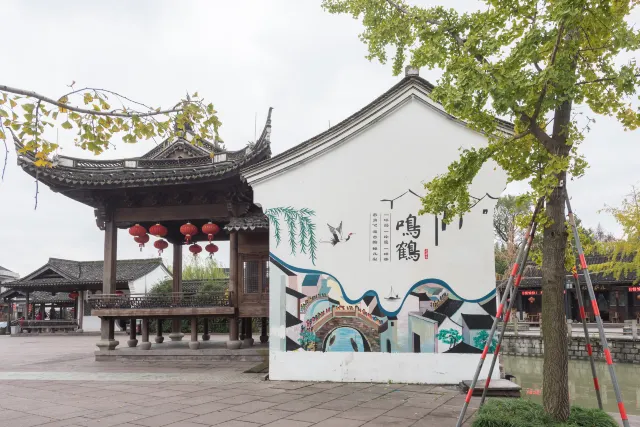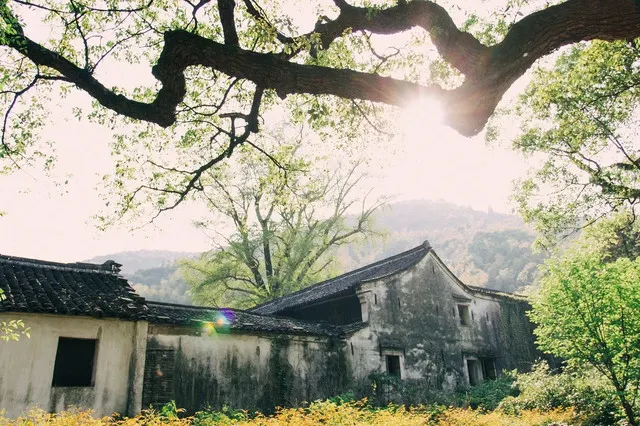Recommendations for Ancient Towns and Villages Around Ningbo
Catalogue
- Zoumatang Ancient Village: Well-Preserved Ancient Buildings
- Qiantong Ancient Town: The Location Where Movie The Music Box was Shot
- Wandering Around The Ancient Fishing Port Town Built on The Mountain
- Minghe Ancient Town: The Scenery in Hegao Competes with That of Suzhou
- Trying A Cicheng Rice Cake in The Ancient Town in Ningbo's Northern Suburb
- Fangjia Hetou Village: Miles of Peach Blossoms
- Xijiang Ancient Village: Relive Childhood Fun
- Danshan Chishui: A Small Village with Green Tile Roofs And Stone Walls
Show More
Zoumatoang Ancient Village is the most recommended ancient village near Ningbo. This small village produced 76 Jinshis between the Northern Song and Qing Dynasties. Jinshis were the successful candidates in the highest imperial examinations in ancient China, so Zoumatoang is known as "The First Village of Jinshi in China". A large number of architectural marvels built in Ming and Qing Dynasties are preserved in the village, and are worth careful appreciation. The carvings in particular, are very brilliant works, and are among the highlights in the village. When you arrive at Zoumatang, the first thing you will see is a lotus pond at the entrance to the village. When the lotus blooms in summer, its green leaves and red flowers contrast with the white walls and black tiles behind the pond, composing a beautiful ink painting. There are stone paths hidden in the lotus pond. Visitors can walk in the pond and take photos with the crowds of lotus leaves. It is quite artistic.

The ancient town of Qiantong, located in the Ninghai County of Ningbo City, is the town with the most Confucian culture in Eastern Zhejiang Province. Here, a group of ancient buildings composed of ancestral halls, old houses, and streets built during the Ming and Qing Dynasties have been left behind and are well-preserved, known to the world through Chen Yifei's movie "The Music Box". To date, many old-fashioned wooden tile-roofed houses have been retained in this ancient town, and there are still some villagers living there. The ancient town covers a small area, and it takes around 2 hours to stroll through it. Currently, the town's main tourist attractions include the Zhi Si Qi Ju,, the Mingjing Hall, the Folklore Museum, the Tong family ancestral hall, the Qunfengzanhu, and the place where The Music Box was filmed.

The ancient city of Shipu is over 600 years old. Sitting between the mountain and the sea, it has the features of both a mountain city and a fishing port. There are many old houses throughout the city, and many roadside shops selling seafood, along with 14 exhibition halls ready to educate you on the ancient city's local history and culture. This town is a good place for anyone who loves ancient cities, culture, or seafood. The ancient city is not too big, and you can just walk along the flagstone road to explore it. Unlike that Southern Yangtze River cities, the architecture here consists primarily of wooden buildings, simple and unadorned. Along the road are antique houses decorated with many colorful fish lanterns. The windows of every home are adorned with small decorations made of shellfish and green plants. They are very unique and make for very beautiful photos.

Minghe Ancient Town was built during the Kaiyuan period of the Tang Dynasty, with a history of over 1200 years. It is one of the ancient market towns in China's Northwest, Northeast, and Northern areas. It is also the only ancient town in Cixi City in the typical style of Southern Yangtze River ancient towns, and enjoys a good reputation of having "the scenery in Hegao that competes with that of Suzhou". There, a river flows through the town from West to East. This river is spanned by seven ancient bridges built during the Ming Dynasty. Many residential buildings of Ming and Qing dynasties stand along the riverbank, with the characteristics of Southern Yangtze River riverside towns. While wandering in the town, you can go rafting in the river, or taste all kinds of local foods.

The ancient county of Chicheng retains its old layout and a large number of ancient buildings built during Ming and Qing Dynasties. Walking around, you can see ancient courtyards everywhere and occasionally the mansion's deep garden. It is a comfortable and quiet ancient city. The Chenghuang Temple on the west side of the ancient county is the most interesting place in the entire ancient county. There is a Cicheng Rice Cake Museum inside, where you can learn about the how the rice cakes are made through various exhibits and pictures, but also taste the same Cicheng Rice Cakes that were reported on CCTV.
The "Cishi Residence," built during Qing Dynasty, is the largest and best preserved of all the ancient buildings in the ancient village of Hetou. The main body of the building faces the South, with a concave layout. There are eight buildings on the East and West sides, and each building is constructed out of exquisite materials and beautifully carved. Peach blossom blooms extend for miles on the Taohua Ridge by the village during the flowering season. The ancient village under the ridge is grassy and lush, surrounded by mountains in the distance, making it a good place for spring travel.
Xijiang Ancient Village was built at the end of the Ming Dynasty and is bordered by a clear river in the front and dense mulberry forests in the back. There are over 100 ancient buildings, including Ming and Qing Dynasty residential buildings. It is a village with a long history and a typical Southern Yangtze River riverside village. There is a farmhouse inn, an ancient theater stage, a leisure house, and a handicraft workshop in the ancient village, where you sip tea and wine at your leisure while enjoying a traditional repertoire performance on the ancient stage, or participate in the manual production of local delicacies such as rice cakes and rice wine, or play classical childhood games such as rolling copper coins, marbles, spinning tops, and shuttlecock kicking in the old house courtyard to experience how children had fun in ancient times.

Chishui Danshan is named after the beautiful scene of "stream flowing in front of red rocks." There are many Taoist relics in the mountain. This small village is full of stone houses. After seeing the many Huizhou-style buildings and ancient towns of Southern Yangtze River, these stone houses are really refreshing. There are many farmhouse restaurants set in old houses with stone walls and green tile roofs. You can cross the Chishui Bridge to the entrance of the mountain if you want to go hiking. You can also start from the Niutou Mountain Road in the village, cross the Qiao Su Garden, and take the Jiuqu Hongyun Path to the stream side. This is the starting point for summer rafting. You can float all the way to the secondary entrance downstream by kayak. On the left side is a trail leading to the mountain. The trail winds around the stream and is connected by small bridges.

Trending Travelogues
Popular Trip Moments
Popular Travel Types
Popular Attractions
Popular Ranked Lists
Popular Destinations
Recommended Attractions at Popular Destinations
About













Site Operator: Trip.com Travel Singapore Pte. Ltd.







